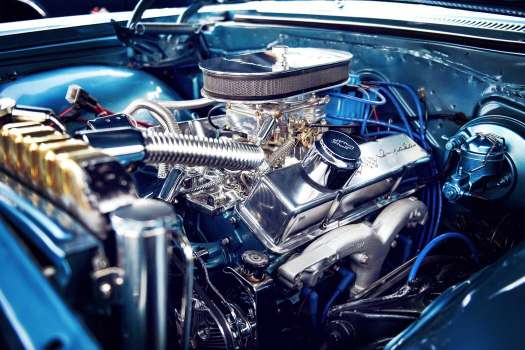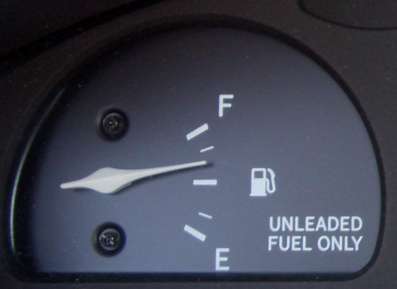We know how important it is for modern vehicle engines to stay at a consistent, high-pressure fuel supply to work properly, especially when exposed to heavy load. To make sure your vehicle stays at the appropriate fuel pressure, we need to check it periodically.
Checking the fuel pressure is also required to figure out underlying problems with your car. However, how would you do that if you don’t have a fuel pressure gauge?
One of the best ways to measure your vehicle’s fuel pressure without a gauge is with an OBD-II scanner. This provides you with real-time readings of the engine’s fuel pressure that are taken directly from your car’s pressure sensors.
Table of Contents
How To Check Fuel Pressure Without Gauge
It is not possible to accurately check fuel pressure without a gauge. A fuel pressure gauge is required to measure the pressure of the fuel in the system and diagnose any potential issues. Using the proper tools and equipment when working on a vehicle is important to ensure safety and accuracy.
A Step-By-Step Guide On How To Check Fuel Pressure Without Gauge
The right fuel pressure is important because it affects the car engine’s horsepower which affects the engine’s performance. Having low fuel pressure can lead to problems starting the engine of the car or worse, getting your vehicle stuck mid-way on the road. Using a diagnostic code reader is the simplest way to check your car’s fuel pressure without using a pressure gauge. Here’s a guided procedure with step-by-step instructions to help you do it:
Step 1. Warming The Vehicle’s Engine (Optional)

Start by warming up the engine by taking it out for a drive. You need to do this because cold engines consume extra fuel and that can lead to wrong pressure readings if you do have an underlying issue.
Step 2. Connect The OBD-II Diagnostic Scanner To The Vehicle
Connect your vehicle to the OBD-II scanner by plugging in the tool to the OBD-II socket. You’ll find this socket underneath the dashboard covered by plastic trim. This applies if you get a wired scanner. But, if you have a wireless OBD-II scanner then simply connect it to its complementary smartphone app.
Step 3. Check If You Have Any Stored Fuel Pressure Error Codes
Before checking out the specific fuel readings, look for stored pressure error codes. Given below are some of the most common error codes seen in OBD-II scanners if you have an issue with your fuel system:
P0202: Electrical issue with vehicle’s fuel pump
P0170: Fuel trim detected outside of the acceptable range.
P0171: Not enough fuel or extra air in the system
P0191: Inconsistent readings of the fuel rail pressure
P0172: Extra fuel is getting into the injectors
Step 4. Inspect The Real-Time Fuel Pressure Readings
If you don’t get any error codes, then you can analyze the fuel delivery system by checking the fuel pressure at various intervals and the delivery rate of fuel as well. Get an OBD-II code reader capable of measuring real-time readings of the engine. To be able to do this properly, you’ll need to check out a handbook. Analyzing the real-time readings will allow you to analyze a couple of different parameters like fuel rail pressure, LTFT, STFT, and fuel injection timing data.

The scanner also gives you the fuel rail pressure set point. This is the optimum pressure when the engine is running fine. You can compare it with the real-time reading of the fuel pressure. A menu will show up, you need to select the one that closely matches the actual or real-time fuel pressure parameter.
You will be shown the present fuel pressure. Now, rev your engine to around 1500 rpm and then to 2500 to 3000 rpm to check if it stays constant under load or not. If the setpoint and the actual fuel pressure are same, it means that the overall system’s pressure is alright and doesn’t have a problem.
Keep in mind that the normal fuel pressure of modern gasoline engines lies in the range of 40 psi to 70 psi as per the type and size of the engine.
Why Do People Want To Check The Fuel Pressure Without Gauge?
Measuring the fuel pressure with a gauge works fine with older fuel-injected engines. The older fuel-injected engine comes with a built-in Schrader valve to hook up the fuel pressure gauge required for measuring the fuel pressure.
However, these days, you won’t find engines that come fitted with Schrader valves mainly because the modern-day vehicle engines operate at a far higher pressure, and introducing a valve will weaken the fuel rail.
So, measuring the fuel pressure with a gauge that needs to connect to a Schrader valve is no longer feasible for most vehicle owners. However, these days, the vehicles come fitted with fuel pressure sensors that can continuously monitor the fuel pressure across all the fuel injectors. This in turn provides feedback to the ECU that allows it to maintain a constant fuel pressure regardless of whether the engine is idling or is under some kind of load.
FAQs
How do I check fuel pressure manually?
An effective method for assessing your car’s fuel pressure without a gauge involves using an OBD-II scanner. This device offers real-time fuel pressure measurements. It’s done by accessing data directly from your vehicle’s pressure sensors, ensuring accurate readings.
Will AutoZone check fuel pressure?
AutoZone doesn’t offer fuel pressure testing services, however, they have fuel pressure test kits available for purchase, allowing you to check the fuel pressure yourself. For professional fuel pressure testing, consider visiting a certified mechanic or service center.
How does a car act when the fuel pump is going out?
When a fuel pump begins to fail, a car might experience hard starting, engine sputtering or stalling, reduced acceleration, decreased fuel efficiency, inconsistent performance, and rough idling or misfires. If you suspect a failing fuel pump, seek assistance from a qualified mechanic for inspection and repair.
What are the symptoms of low fuel pressure?
Appropriate fuel pressure is necessary for your car’s engine to perform and operate properly. So, if you had low fuel pressure, your car will show a lot of symptoms like the ones given below:
1) More than one episode of sudden engine power loss
2) Hesitation while starting the car
3) Episodes of engine sputtering and going back to normal speed when you drive at high speeds for prolonged periods.
What should the ideal fuel pressure be?
The correct fuel pressure for an engine depends on its size and deliverable horsepower. However, in general, most vehicles have a fuel injection gasoline engine that runs at a fuel pressure in the range of 40 psi to 70 psi. Vehicles with diesel engines operate with fuel pressure up to a maximum of 2000 bar or 29,000 psi at the injectors.
Final Words
Fuel pressure is an important factor that controls the performance of your vehicle. So, you need to check it periodically and perform maintenance as needed. You can measure the fuel pressure even if you don’t have a fuel pressure gauge and the above article aims to teach you how. Keep in mind that measuring the fuel pump pressure is a risky procedure since it involves fuel that can be very flammable. It’s recommended to be very cautious while dealing with fuel.
